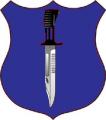The Germans did tend to strip officers out of the field command side if they passed the examinations allowing them to enter the staff officer track, BUT they also had a rather different view of staff work than we did at the time (and possibly still do). For the Germans (at least in the idealized view of operations), the chief of staff was supposed to be the field commander's alter ego. It was in theory a complementary position. This is in direct contrast to American staff positions in the 1800s through the early 1900s, which were a way to get out of any field work. The rivalry between line and staff officers in the 1800s is legendary, and caused a great deal of heartache.
Root did some good things, but he also saddled the Army with a dysfunctional personnel system. It seems we have discarded most of his "good" while clinging to the "bad."















Bookmarks